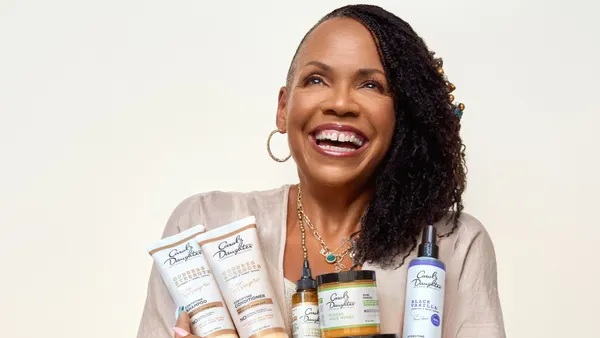Dive Brief:
-
Due to the high level of uncertainty from the surging pandemic, its attendant economic damage and the U.S. presidential election, the National Retail Federation on Monday predicted holiday spending growth to fall in the unusually wide range of between 3.6% and 5.2% over last year, to reach somewhere between $755.3 billion and $766.7 billion.
-
The trade organization also expects e-commerce alone, which is included in the total, to rise between 20% and 30%, reaching between $202.5 billion and $218.4 billion, up from $168.7 billion last year.
-
Despite the uncertainty, which also led to a later forecast, NRF CEO Matthew Shay and Chief Economist Jack Kleinhenz told reporters Monday that holiday spending will be buoyed by consumers who, they said, are in a mood to celebrate and in some cases have extra cash — thanks to federal stimulus and a summer with few opportunities to spend as the pandemic prevented travel and entertainment.
Dive Insight:
As the COVID-19 pandemic has dragged on for months now, tragedy and uncertainty have plagued society the world over, with U.S. consumers also bombarded with information about a major national election and awaiting renewal of a stimulus package that remained up in the air even at press time.
Shay during a conference call with reporters on Monday urged the lame duck Congress to consider taking up another relief bill, saying that "waiting just puts some of these American families in jeopardy."
"Getting something done this year would be a positive for the economy," he also said. "It would be a shot in the arm to keep our economy moving forward."
Not many actually expect more funds to reach the consumer before the holidays, considering the track record of lawmakers in the last days of any legislative session. But the NRF is upbeat about the shopping season nevertheless because of the track record of consumers throughout the year, according to Kleinhenz and Shay.
Shoppers have seized similar opportunities to spend, like Mother's Day and Halloween, and have adapted well to behavioral changes necessitated by the pandemic, including the call to start spending earlier for the holidays, Shay noted.
Indeed, retailers and consumers alike have adapted, setting up a smooth path for the season, Shay also said. The industry has instituted measures like mask and distancing rules; developed or expanded curbside pickup and other BOPIS options; and invested billions in health and safety protocols to protect workers and customers, Shay said. That will all come in handy this season, and is likely to take hold longer term as well, he said.
The same is true with the digital channel in general, according to Kleinhenz. "We know that consumers have embraced and have become more comfortable with online shopping," he said. "Digital shopping is going to be a factor, and thank God we have it. It's been important for many households."















